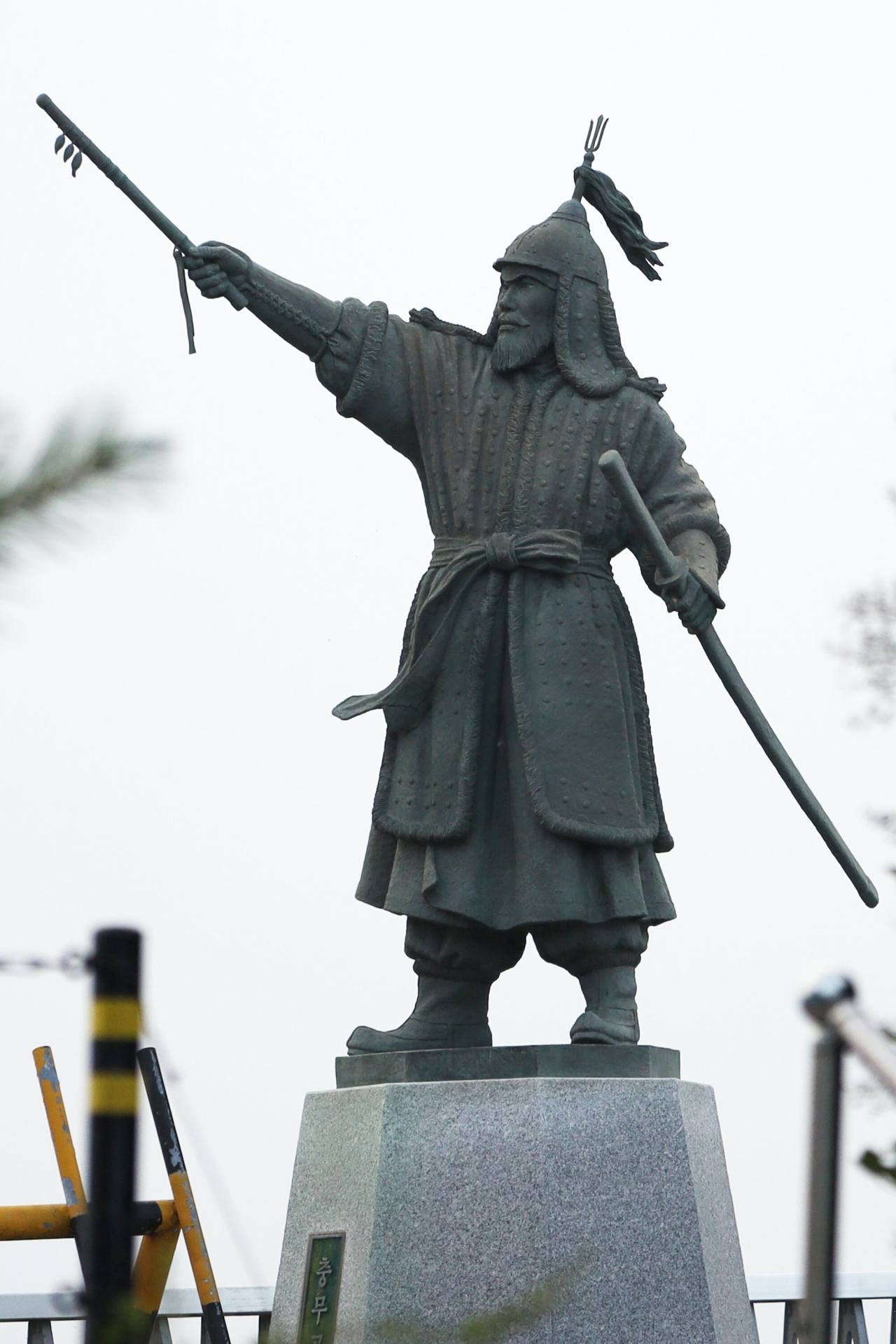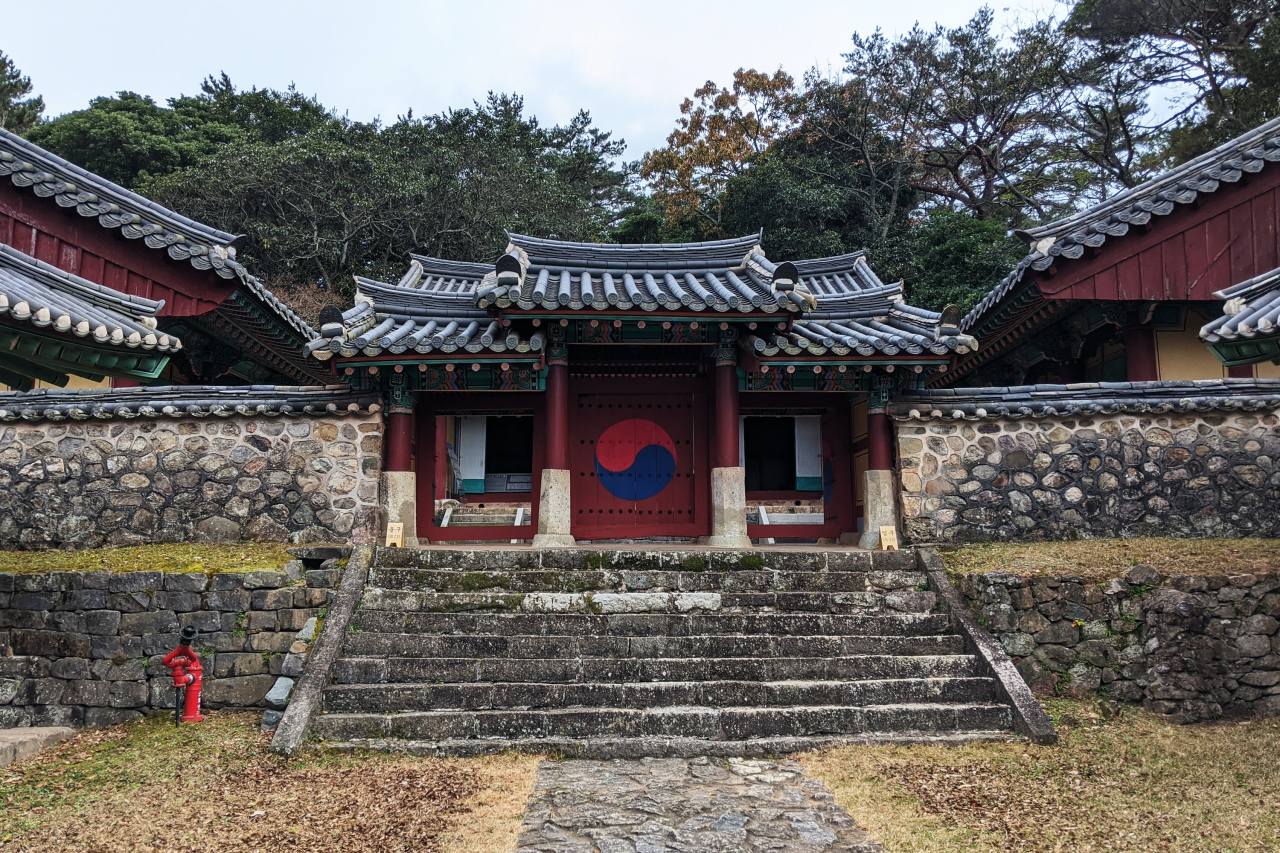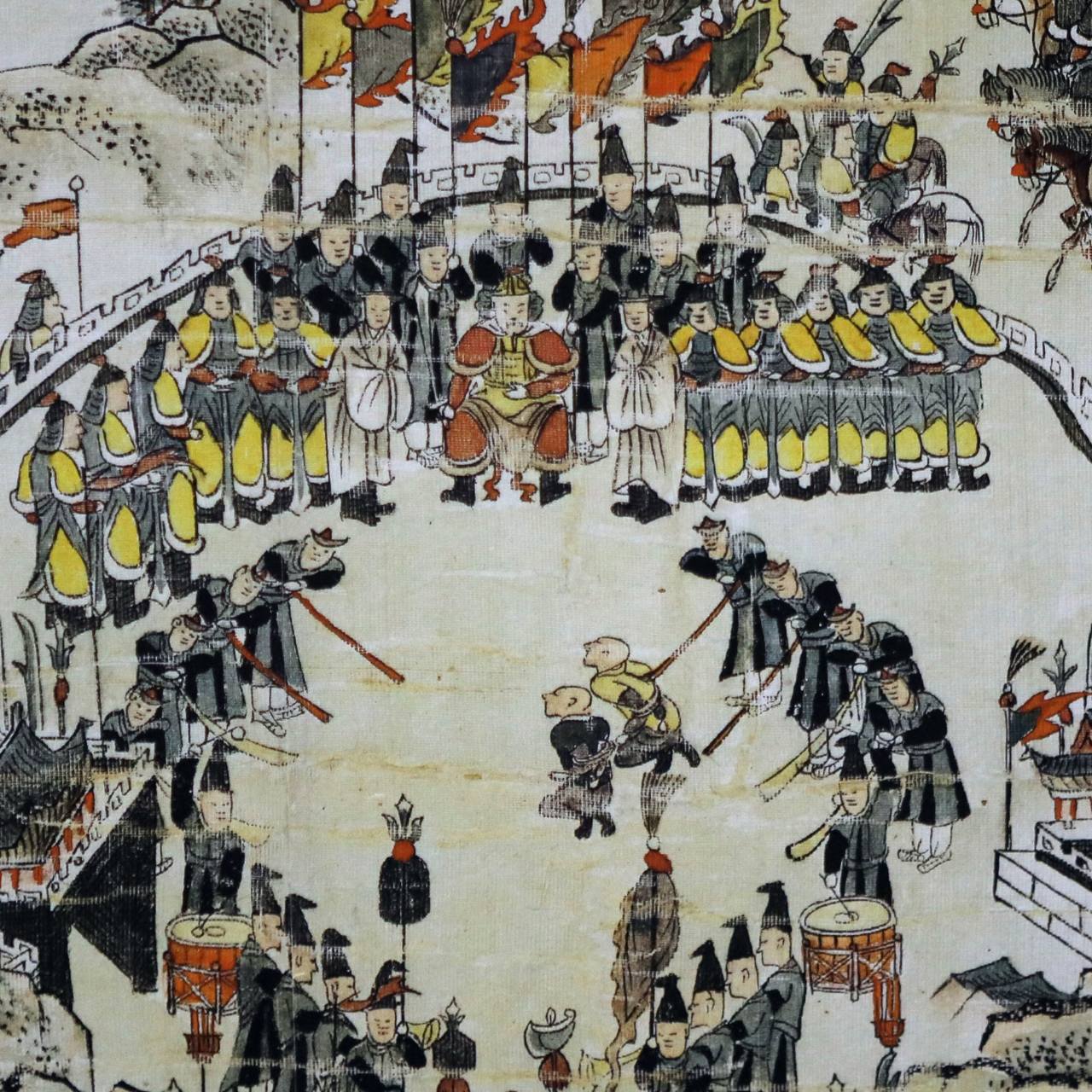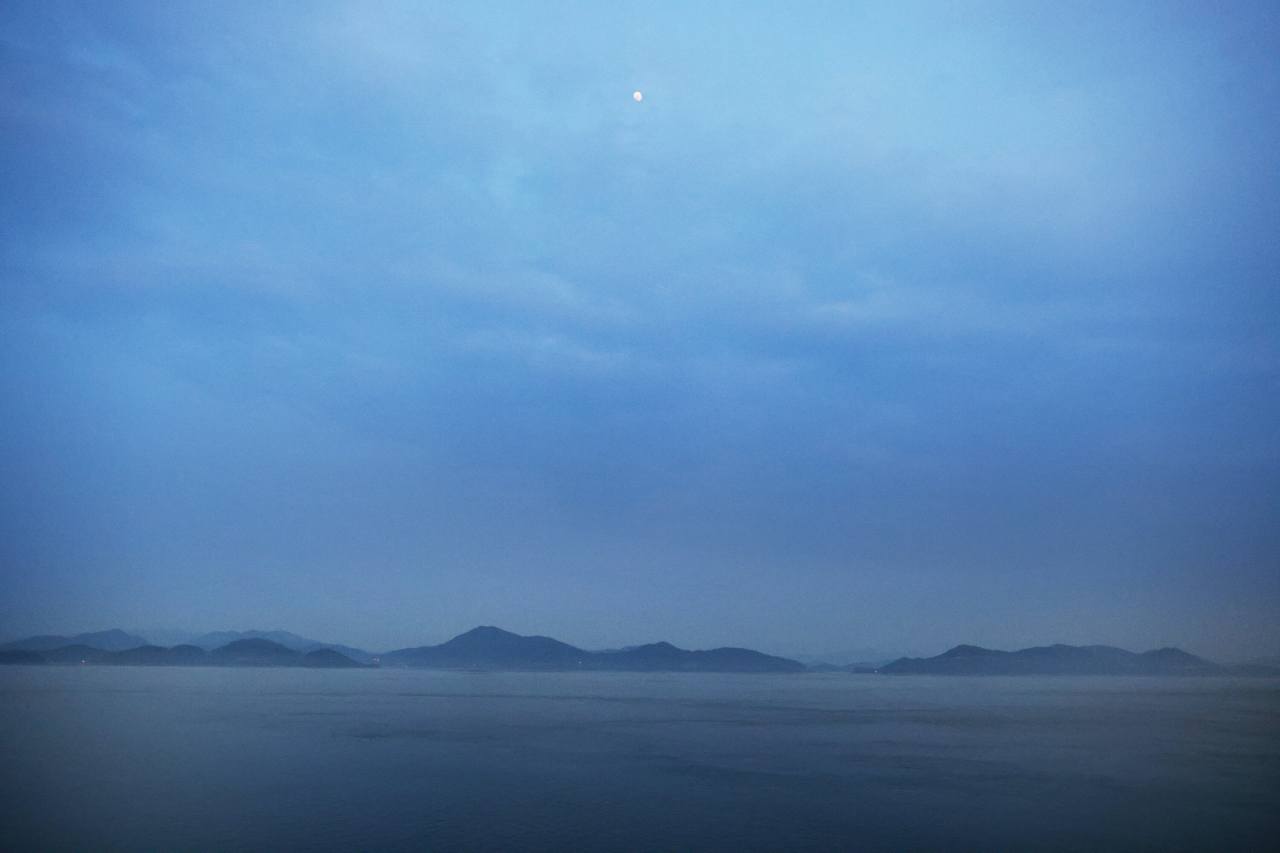
A statue of Adm. Yi Sun-sin guards over the Jindo Bridge connecting the island of Jindo to the mainland in South Jeolla Province. Photo © Hyungwon Kang
War is always a human-made calamity. The Japanese invasions of Korea (1592-1598), known as the Imjin War, that began in the Year of the Dragon in 1592 were no different.
While Korea of the Joseon era had superior battleships, muzzle-loading cannons and large weapons that could rapidly fire several rounds of explosives, which Japan lacked, the combat-ready standing army at the time of the Japanese invasion was only around 2,000 men.
Goryeo Kingdom inventor and engineer Choi Mu-sun (1325-1395) had developed large muzzle-loading cannons that were successfully used against Japanese pirates raiding Korean coastal communities.
Goryeo war hero Yi Seong-gye, who founded the Joseon Kingdom in 1392, rose to prominence by putting down invasions of Japanese pirates on the southern coast of Korea in 1380.
The frequent attacks by Japanese pirates from 1350 to 1389 were partly due to the lack of centralized governance in Japan during an ongoing civil conflict for about 60 years called Nanbokucho, or “the period of southern and northern courts,” from 1336 to 1392, when two lines of imperial thrones fought for legitimacy.
By the time King Seonjo (1552-1608) ascended to the throne, a considerable percentage of the population were slaves in the households of the ruling elites, and therefore unavailable for military service.
In 1592, the Joseon kingdom had about 2,000 active soldiers available for each of four three-month periods in the year, totaling around 8,000 soldiers throughout the year. Slaves and elites were not subjected to compulsory military service, which placed an undue burden on farmers forced to take time off from their livelihood to serve in the military.

The temple Chungmusa in Gogeum-myeon, Wando County, South Jeolla Province, is a memorial shrine dedicated to Adm. Yi Sun-sin. Photo © Hyungwon Kang
The lack of men available for military service led to some among the ruling elites to propose disbanding the costly navy during the early period of King Seonjo’s reign, which began in 1567.
The invading Japanese military was a product of a centurylong civil war in Japan called the “Age of Warring States,” a near-constant civil war starting in 1467.
By the time Japan invaded Korea in May 1592, the Japanese Army constituted probably the highest caliber of military fighters in East Asia.
As expected, Japanese soldiers reached Seoul within 20 days of landing in Busan on May 23.
The Joseon government’s approach to fighting war involved gathering able men to make up a fighting force in the event of an invasion. Untrained farmers rounded up as a temporary army had no chance against the 160,000-strong Japanese Army.
In the waters off Korea’s southern coast, however, the Korean Navy had Yi Sun-sin.
The battle-hardened Adm. Yi (1545-1598), who had successfully defended the country against invaders in the northern territories in 1587 and 1588, had just been assigned to commanding Joseon’s navy on the southwest coast in 1591 at the age of 46.
Yi was credited for claiming back from Jurchen invaders the island Noktundo in the delta of the Tumen River on the border between modern-day Primorsky Krai, Russia and Korea. Noktundo was handed over to Russia by the Qing dynasty in 1860 without Korea’s participation in the deal.
One of the first things Yi ordered upon arrival to the southern coast was the renovation and improvement of the 35-meter-long Geobukseon, or the “Turtle Ship,” and the building of a fast and sturdy battleship: the 140.3-metric-ton Panokseon, which was 32.16 meters long and could carry up to 140 personnel.

The contemporaneous painting titled “Jangyanggongjeongtosijeonbuhodo” depicts Jurchen invaders being punished. Adm. Yi Sun-sin, then a junior officer, is listed as being present at the scene. Photo © Hyungwon Kang
The Turtle Ship was equipped with powerful cannons and was designed to get close to enemy ships and destroy them with cannon fire. The Turtle Ship was fully covered with metal plates and sharp metal nails that prevented enemy seamen from boarding.
In his direct communique to King Seonjo on June 14, 1592, Yi wrote: “Yours truly made a special Turtle Ship in preparation for a possible invasion by the Japanese enemies. A dragon head was placed in front of it, and cannons were fired from the mouth, and iron nails were installed on its back. We can see out from the inside, but people can’t see inside from the outside. We can charge into hundreds of enemy ships and fire our cannons at them.”
The Panokseon battleship was a product of Korea’s long tradition of maritime dominance in East Asia, with 20 muzzle-loading cannons on board.
The muzzle-loading cannon technology from the Goryeo Kingdom (918 -1392) period went through a significant upgrade and improvement during the reign of King Sejong the Great (1397-1450).
Up to 20 cheonjachongtong, a 1.3-meter-long cannon with a 130-mm bore capable of firing a 30-kilogram daejanggunjeon projectile, a large rocket-shaped arrow with an iron head and fins, to a distance of about 1,400 meters, were deployed on each of the Panokseon battleships.
Cheonjachongtong cannons were also mounted on the Turtle Ship and were credited with sinking many Japanese warships. In addition, the dragon head of the Turtle Ship was equipped with hyeonjachongtong, cannons which were capable of firing 30 metal balls measuring 30 mm in diameter at once.
At the Battle of Myeongnyang on Oct. 25, 1597, Yi, using just 13 Panokseon battleships, fought the Japanese Navy near the island of Jindo, off the southwestern corner of the Korean Peninsula, decimating some 330 Japanese warships.
In fact, of the 23 naval battles during the war against the Japanese, Yi lost none, an unrepeated record in global naval warfare history.

In the Battle of Myeongnyang on Oct. 25, 1597, Adm. Yi Sun-sin, using just 13 Panokseon battleships, fought the Japanese Navy near the Island Jindo in the southwest waters off Korea, decimating some 330 Japanese warships. Photo © Hyungwon Kang
Several jijachongtong, cannons about a meter long with a 100-mm bore shooting 16.5-kg janggunjeon projectiles, were also placed on the Joseon battleships.
While Japanese ships were greater in number, they were not as potent in battle. Japanese warships were not nearly as sturdily built as Korean warships and deployed only a maximum of four cannons, as the Japanese preferred engaging in combat after jumping aboard enemy ships.
While Yi was a decorated soldier and a naval fleet commander, he struggled against many enemies within the Joseon court.
Politicians who were jealous of Yi’s accomplishments falsely accused him of various charges, which led to multiple imprisonments as well as torture.
Yi documented the crippling pains of the wounds he sustained from serving time in prison in his “Nanjung Ilgi,” or “War Diary of Adm. Yi Sun-sin,” which has been included on the UNESCO Memory of the World Register.
Despite all odds, Yi became the most decorated naval commander in history. He protected South Jeolla Province, the rice basket of Korea, from Japanese invaders and cut off war supplies for the Japanese Army, which had advanced past Pyongyang and had wreaked havoc in the northern part of Korea as well as the rest of the country during the seven-year Imjin War.
By Hyungwon Kang (hyungwonkang@gmail.com)
---
Korean American photojournalist and columnist Hyungwon Kang is currently documenting Korean history and culture in images and words for future generations. -- Ed.









